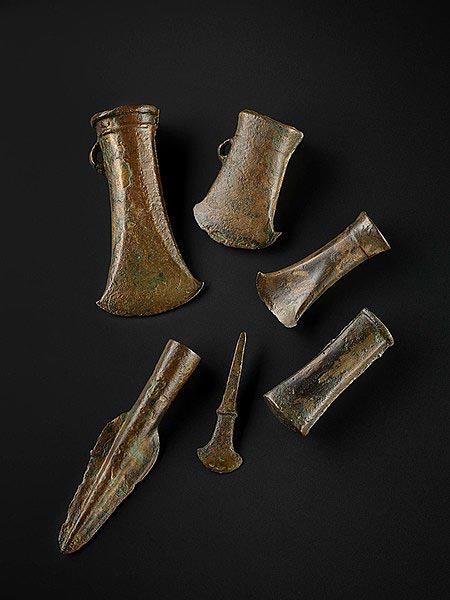Two new studies highlight technological advances in large-scale genomics and open windows into the lives of ancient people.
New research reveals a major migration to the island of Great Britain 3,000 years ago and offers fresh insights into the languages spoken at the time, the ancestry of present-day England and Wales, and even ancient habits of dairy consumption.
The findings are described in Nature by a team of more than 200 international researchers led by Harvard geneticists David Reich and Nick Patterson. Michael Isakov, a Harvard undergraduate who discovered the existence of the migration, is one of the co-first authors.

This image is of bronze age tools from the National Museums of Scotland, which could give readers a sense of the material culture associated with people who lived at the time of the migration. Credit: Bronze Age tools curated the National Museums of Scotland
The analysis is one of two Reich-led studies of DNA data from ancient Britain that Nature published on Tuesday. Both highlight technological advances in large-scale genomics and open new windows into the lives of ancient people.
“This shows the power of large-scale genetic data in concert with archaeological and other data to get rich information about our past from a time before writing,” said Reich, a professor in the Department of Human Evolutionary Biology and a professor of genetics at Harvard Medical School. “The studies are not only important for Great Britain, where we now have far more ancient DNA data than in any other region, but also because of what they show about the promise of similar studies elsewhere in the world.”
The researchers analyzed the DNA of 793 newly reported individuals in the largest genome-wide study involving ancient humans. Their findings reveal a large-scale migration likely from somewhere in France to the southern part of Great Britain, or modern-day England and Wales, that eventually replaced about 50 percent of the ancestry of the island during the Late Bronze Age (1200 to 800 B.C.).
The study supports a recent theory that early Celtic languages came to Great Britain from France during the Late Bronze Age. It challenges two prominent theories: that the languages arrived hundreds of years later, in the Iron Age, or 1,500 years earlier at the dawn of the Bronze Age. READ MORE...

No comments:
Post a Comment